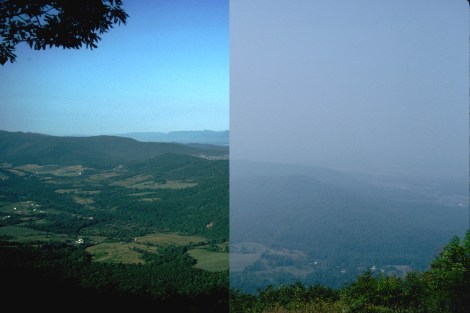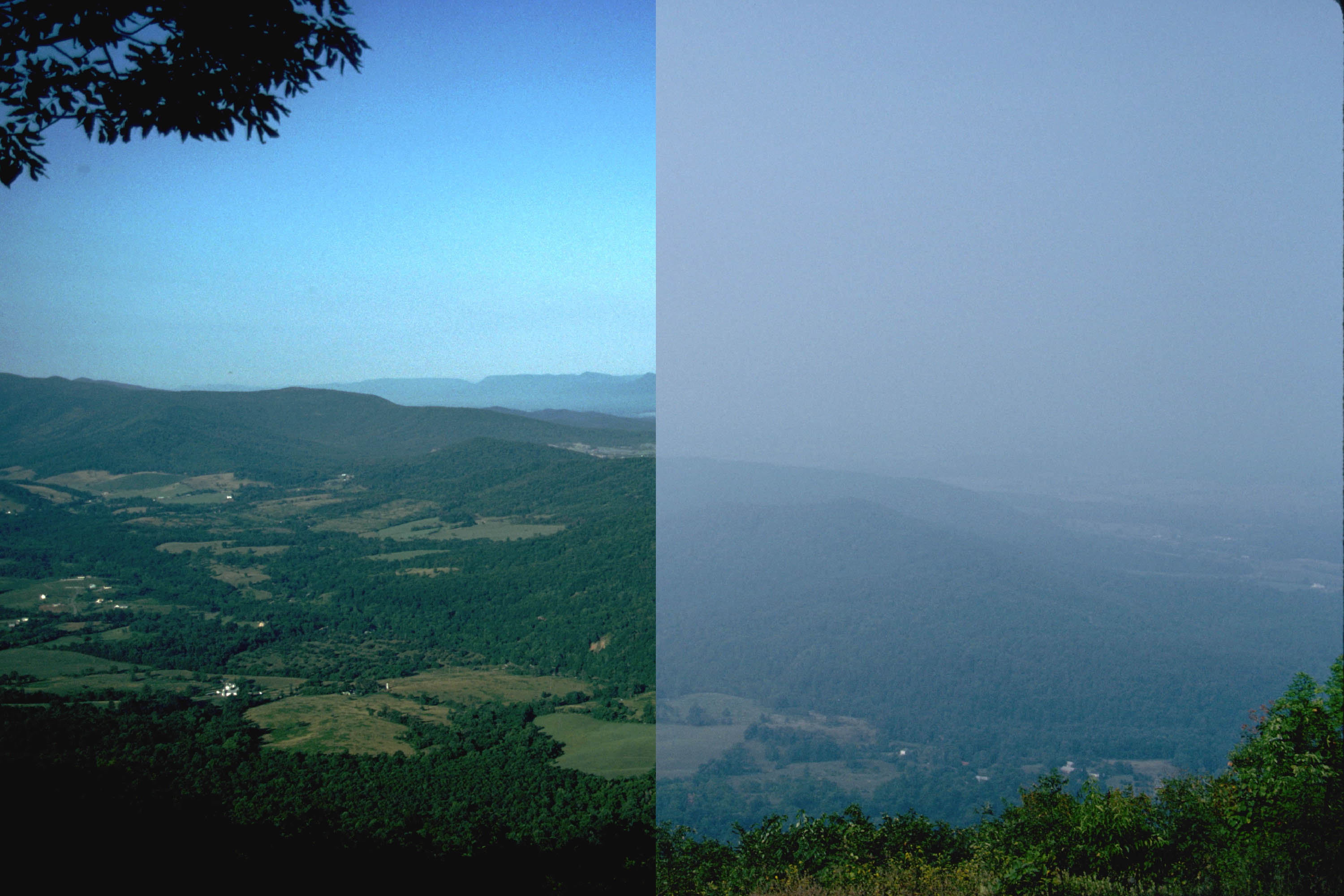The Environmental Protection Agency can’t do anything about humidity. It hasn’t been able to do much about heat, though it’s trying. Then there’s that other scourge of “hazy, hot, and humid” summer days. Haze, the EPA can do something about.
In June, the agency proposed new rules limiting soot pollution, one of which would create a new standard that cuts particulate matter pollution to improve visibility primarily in urban areas.
Which is all well and good while you’re in the city. Haze in rural areas is a whole other issue.

A side-by-side comparison of the view at Shenandoah National Park on clear and hazy days. (Photo by the National Park Service.)
In 2004, USA Today ran an article lamenting the sorry state of visibility in our national parks. Eight years later, things haven’t greatly improved. The New York Times looked at how the EPA’s efforts to curb haze are faring.
An amendment to the Clean Air Act passed 35 years ago was designed to ensure that when visitors get to their destinations, they will be able to see the parks’ vistas.
For the better part of those years, there has been a tug of war between the owners of manufacturing concerns — particularly coal-fired power-plants — and the Environmental Protection Agency over how far the agency can go in requiring plants to cut down on three pollutants linked to haze: fine particles, which blur the air on their own, and sulfur dioxide and oxides of nitrogen, which break down into other smog-producing chemicals with the sun’s help.
The EPA’s mandate was to introduce standards that states would be expected to implement to reduce haze at a broad range of national parks and other scenic sites. They did. And now the states are pushing back, as the Times outlines.
[T]he agency’s proposals to toughen some of the requirements on power plants in the remaining 20 states have created a buzzsaw of opposition in places like Oklahoma, North Dakota and, most recently, Arizona.
Those states are fighting back, arguing that the Obama administration should not be imposing major cleanup costs on electric generating companies when the overall economy is struggling and that the requirements could cause plant closings and eliminate jobs.
Republicans on Capitol Hill are joining the fight. In June, the House oversight committee held a hearing to express outrage at the EPA’s efforts. In the words of committee chairman Rep. Darrell Issa (R-Calif.), “Ultimately, EPA’s proposal will costs billions of dollars for visibility improvements that are undetectable to the human eye.”
Hand-wringing over the economic impact of air regulations is hardly new, nor is it convincing.
The best response to criticism is an image like the one above. While the EPA’s modest recommendations certainly wouldn’t ensure that every day will look like the photo at left, their aim is to prevent every day from looking like the one at right. Shenandoah Park has a live shot allowing potential visitors to gauge visibility before they decide whether to come — a great courtesy, but one that it would be fantastic to make obsolete.
And then we can work on the humidity.



